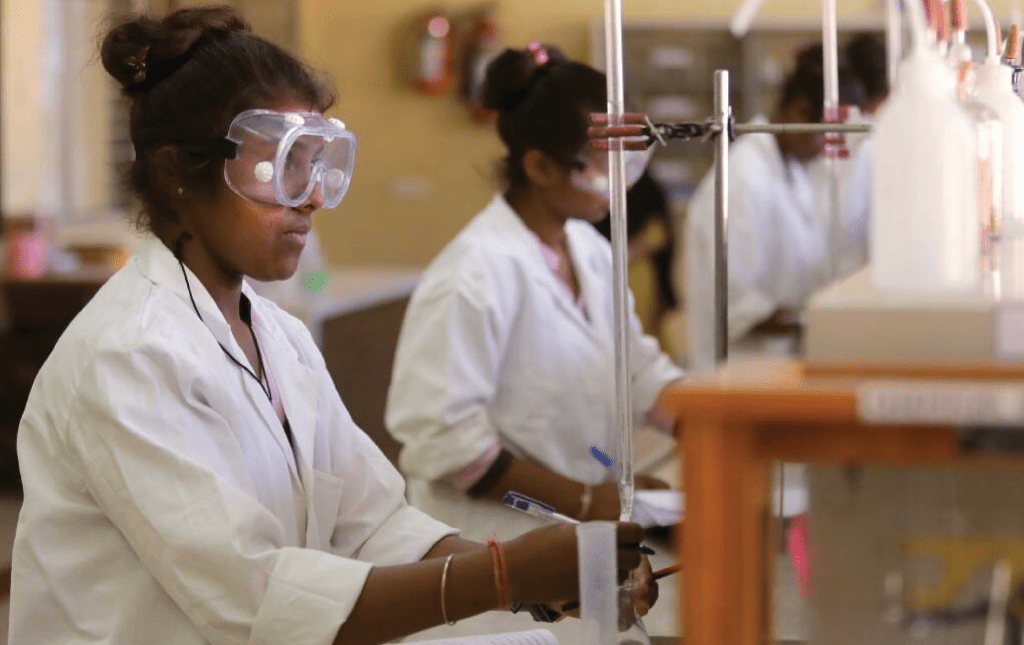National Science Day: PhD, Masters in Physics courses saw two-fold rise in enrollments in last decade
Today, India will celebrate National Science Day to commemorate the discovery of the ‘Raman Effect’ by Indian physicist CV Raman. A Nober Prize laureate, Raman earned his bachelor’s and master’s degree in Physics from Presidency College, Kolkata.
While Physics remains one of the sorts after courses at the undergraduate level for science students, the enrolment in postgraduate and doctorate levels has also seen an uptick in the last decade.
As per the Ministry of Education’s All India Survey on Higher Education (AISHE) reports released between 2013 and 2023, the number of students pursuing Masters in Physics increased from 42,838 to 84, 742.
A similar pattern was observed for PhD enrolments which increased from 3,196 in 2013 to 7,720 in 2021. While the report did not mention the reasons for the significant increase in enrolment numbers, indianexpress.com talked to Physics professors from IITs and central universities to understand the trend.
Increase in science-oriented colleges, courses
The introduction of science-focused institutes and courses is one of the major reasons for an increased enrolment rate in Physics degree, experts suggest.
“The launch of new IITs and IISER, which mainly focus on non-technical science subjects in the last 10 to 15 years, is one of the major reasons for this increase. More colleges mean more seats and better opportunities for interested students. Even the older IITs and IISc have introduced BS programmes in Physics which creates a base for students to pursue the course at postgraduate and doctorate level,” said Arul Lakshminarayan, HoD, Physics at IIT Madras.
Meanwhile, Sushant Ghosh, head of the Physics department at Jamila Millia Islamia also believes that better facilities at both government and private institutions have led to this substantial change.
‘Over the years, the institutes have not just developed their course curriculums but also the infrastructure facilities. For science courses, laboratories, and equipment are crucial for practicals. With better facilities, faculty and courses, institutes offering Physics courses are attracting students in larger numbers,” Ghosh said.
Wide career opportunities
Subject experts also believe that the extensive scope of work opportunities for Physics scholars could also be another factor attracting more students to the course.
Prof Prem Pal, HoD-Physics at IIT Hyderabad believes that opting for advanced training in Physics through specialised masters and PhD programmes presents (physics) graduates with a great opportunity to learn and acquire the indispensable tools to make valuable contributions in their future roles in academia, industry, or public service.
“The coursework and projects in such advanced physics degrees are designed to train the graduates and scholars to undertake complex tasks and/or projects in a systematic manner, via the use of either top-down first principles approach or a more bottom-up effective approach. Their in-depth understanding of the laws of physics, which span all the other sciences and engineering, puts them in a unique advantage to close the gaps in knowledge across disciplines,” Pal explained.
While it’s a common conception that non-technical science graduates usually take up academics as a career option after higher education, Jamia’s Ghosh said that it is a misconception in Indian society that if a student doesn’t qualify for engineering they cannot work in the IT sector.
“With their diverse understanding of advanced Physics, these students can easily find their place in the IT and technology sector. We have several examples from our department where PhD Physics students landed up jobs with major IT companies in the USA,” Ghosh said.
More women enrolments at PG Level
Another trend observed in the AISHE reports of the past decade is the rise in the number of women students pursuing higher education degrees in physics. The surge has resulted in the number of female candidates pursuing Physics at the PG level more than male students. However, male students continue to dominate at PhD level.
“I have witnessed a significant increase in the number of female students enrolling for PG Physics at the Department of Physics & Astrophysics, DU. However, there are definitely fewer women at PhD level. This is more related to societal pressure than the academic preferences of female students. Girls are usually encouraged to either look for a job or get married after a certain age. I have seen capable students quitting midway due to discouragement by family members,” Amarjeet Kaur, professor at the Department of Physics & Astrophysics at Delhi University highlighted.
“However, times are changing. The enrolment is increasing overall compared to what it was a few years ago. The key is to encourage girls at a young age to be scientists and professors. Family support and encouragement can help us improve numbers at a faster pace,” she said.
Courtesy : The Indian Express
